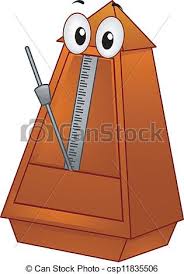A student writes: "Is there a most efficient approach to achieving speed? Unevenness in runs and mistakes in tricky passages often seem to result from inhibitory muscle tension (the readiness to stop a motion that is wrong). When playing music I can often *feel* mistakes or complete disasters coming seconds before they occur. This may be a slow tightening of the don’t-do-that muscles."
 |
| Muscle tension |
My answer: Your main question is about achieving speed and accuracy in scales and passages. From what you describe, though, I get the impression—this is impossible to know without watching you play—that you are not at rest at the bottom of the key. That is, you seem to be holding ("inhibitory muscle tension"), instead of releasing. Try this on one note: drop into the key with your finger/hand/forearm
 |
Sitting upright
without tension |
aligned in such a way that it feels like a single unit. You are not pressing down past the key bed and you are not lifting
 |
| At ease |
up. Find out what it takes to stand there; you are not tense, neither are you relaxed. This is akin to standing at ease, as in the army, or sitting upright in a chair. The next step is to find out how to transfer that weight to the next note via forearm rotation. (Have a look at the iDemos.)
If you "cannot play a particular pattern," it means you haven't found the technical solution(s), i.e., grouping, fingering, shaping, etc. I know this sounds like a cop out, but it's really true. There are always answers. When playing a scale, for example, make sure that the thumb is approximately behind the finger playing as you approach the crossing (see iDemo). This puts your forearm at an angle with the keyboard.
Once the technical solutions have been worked-in,
 |
| Old-fashioned metronome |
gradually increase the tempo in units. In the case of the scale, include the thumb crossing in a unit. For example, 1,2,3,1,2 and 1,2,3,4,1,2. This is a very good use of the metronome. Play each unit at least three times at each tempo before going on to the next tempo, noting that nothing changes in the ease of playing. This repetition is not for strength training but for teaching the correct movements to the playing apparatus. When each unit feels great at the desired tempo, then try combining two units and working them up together from slower to faster, although you may not need to start sat the slowest tempo.
Don't try to work up speed until you have decided on and worked-in the technical solutions.




No comments:
Post a Comment